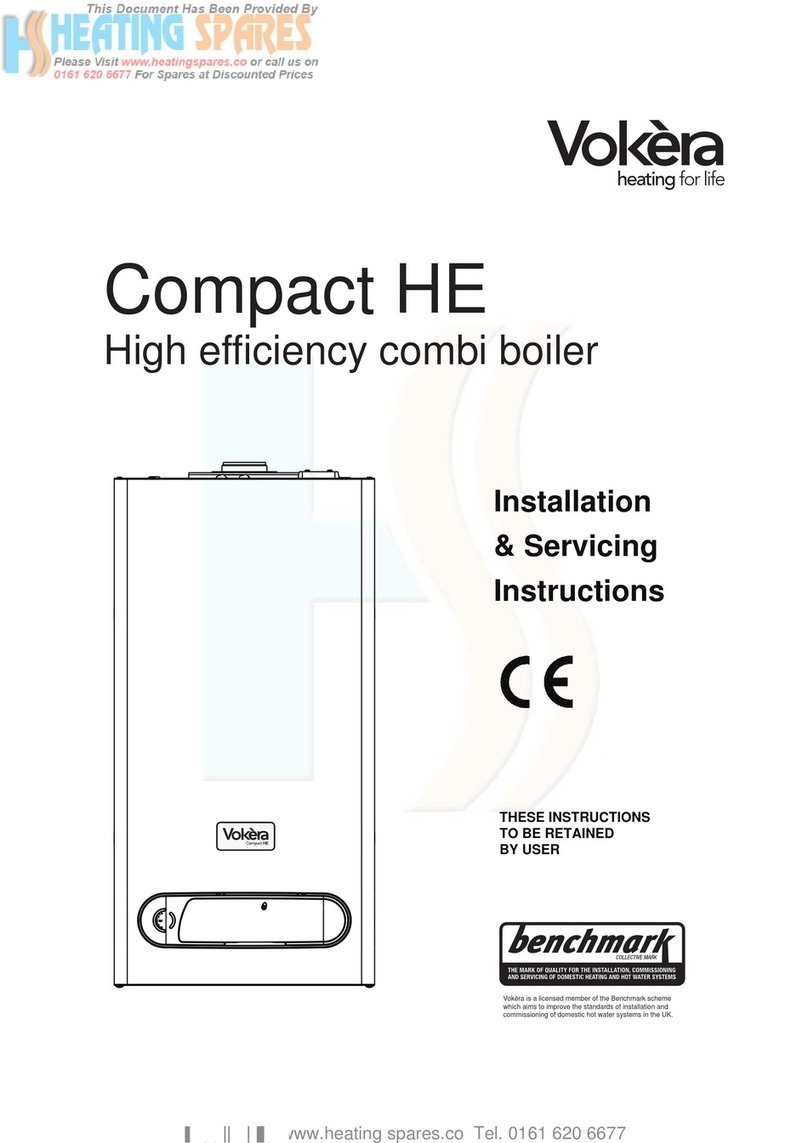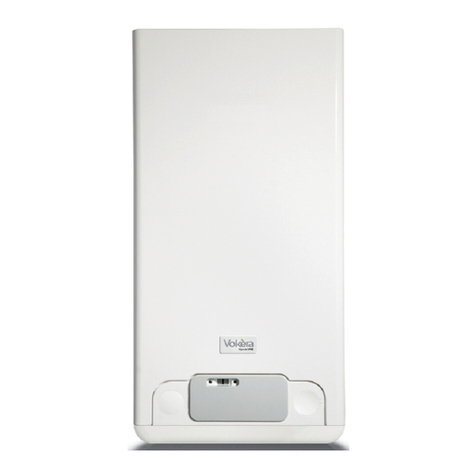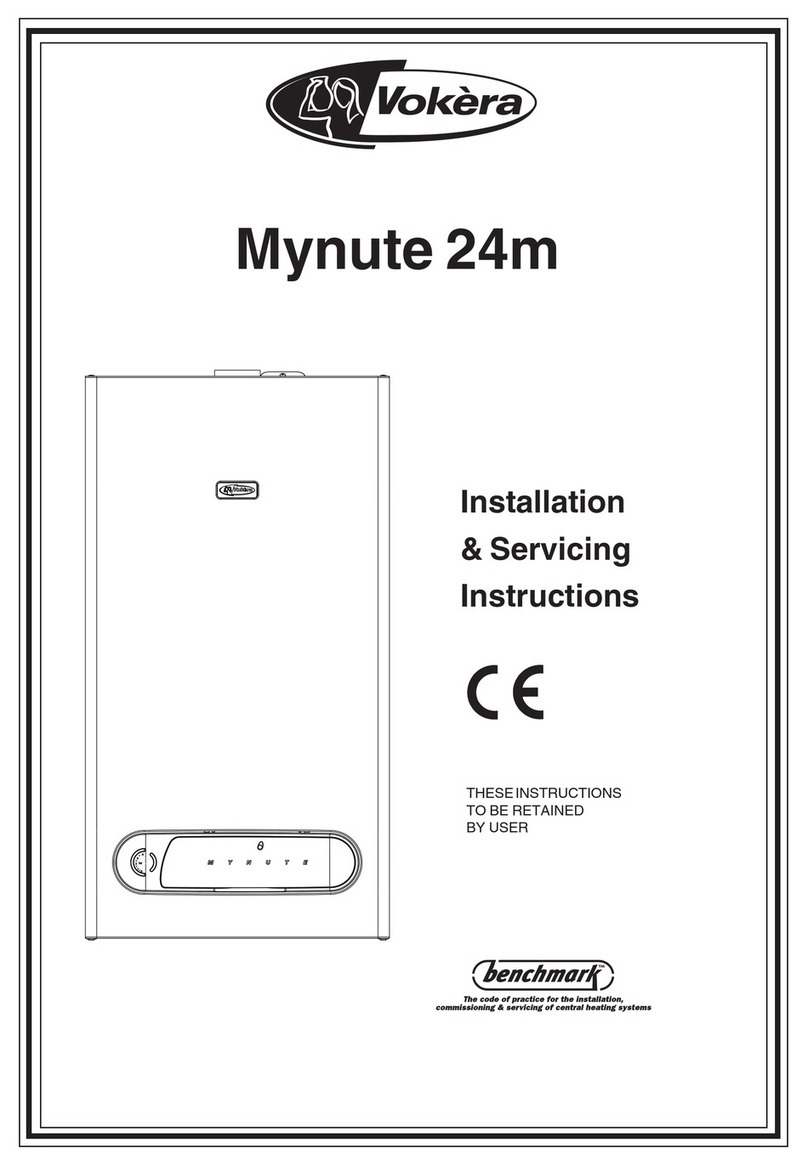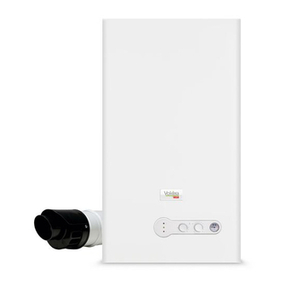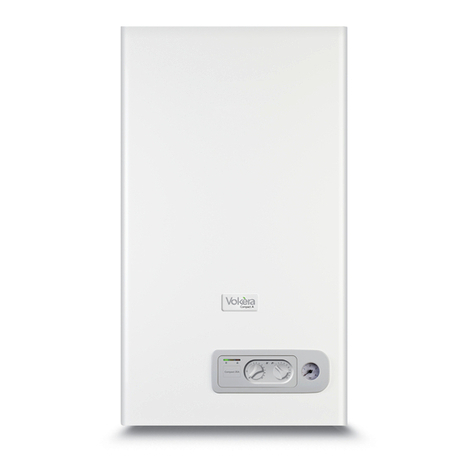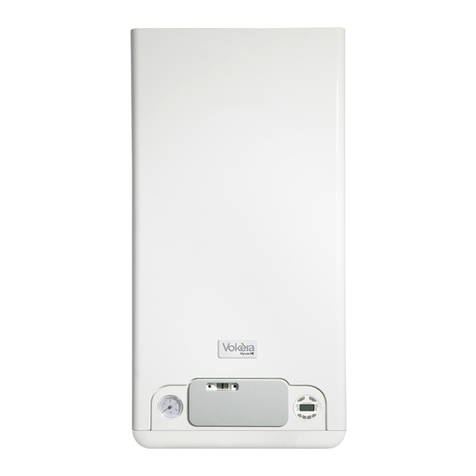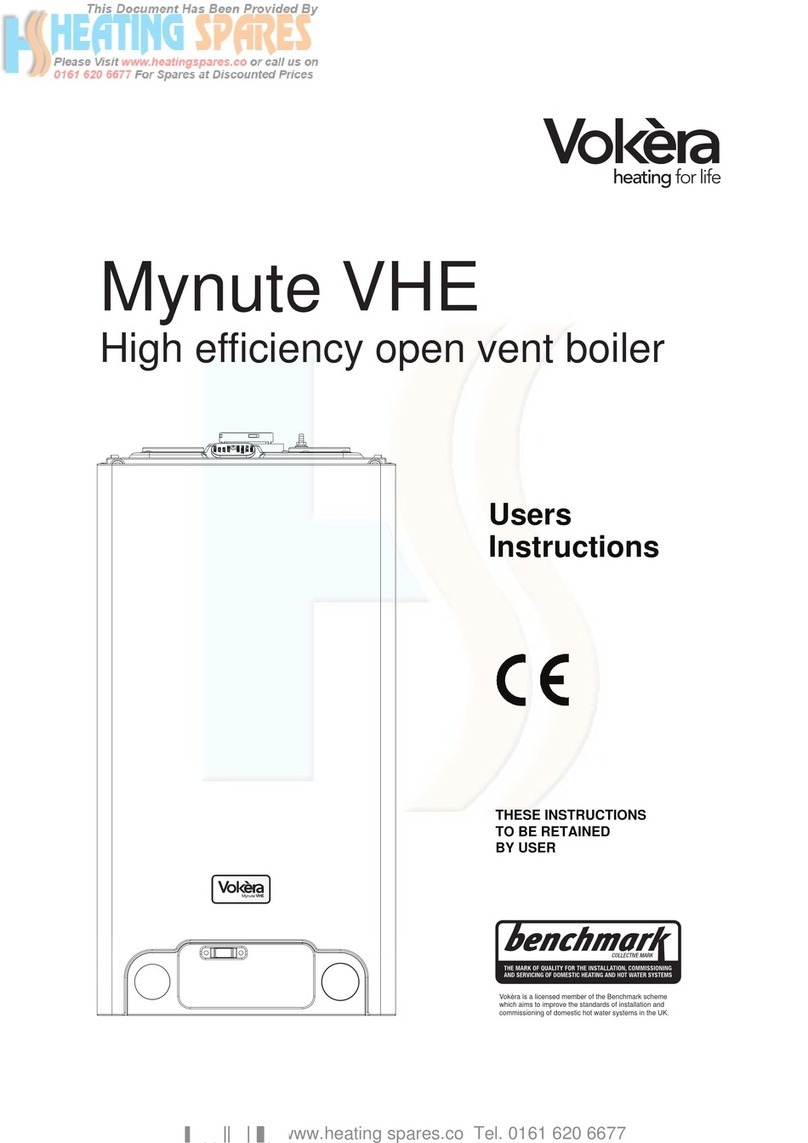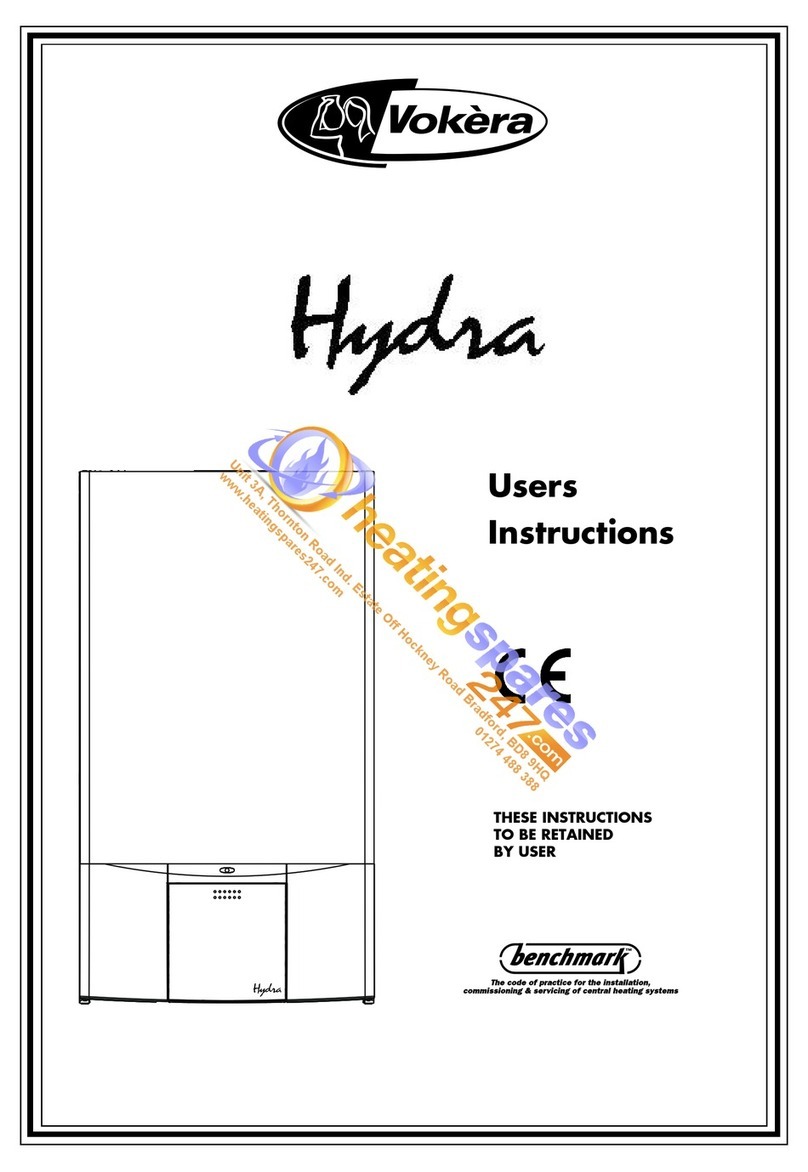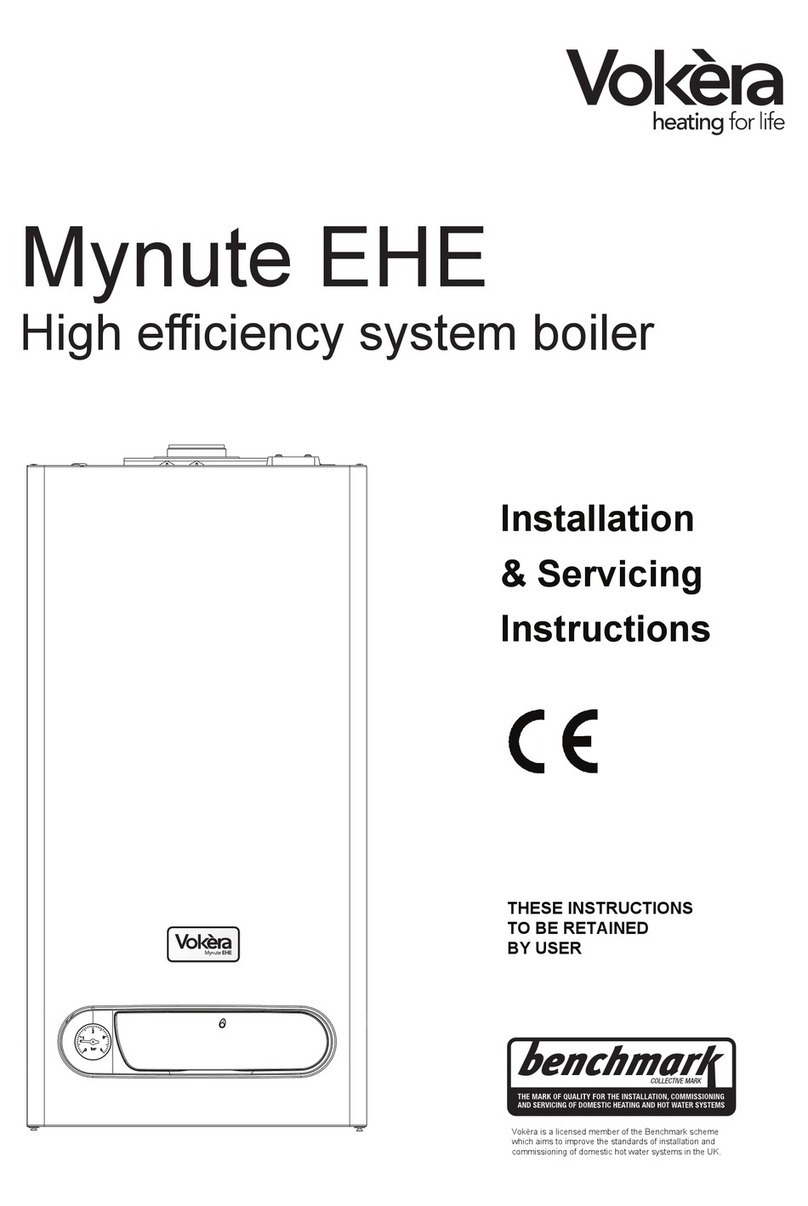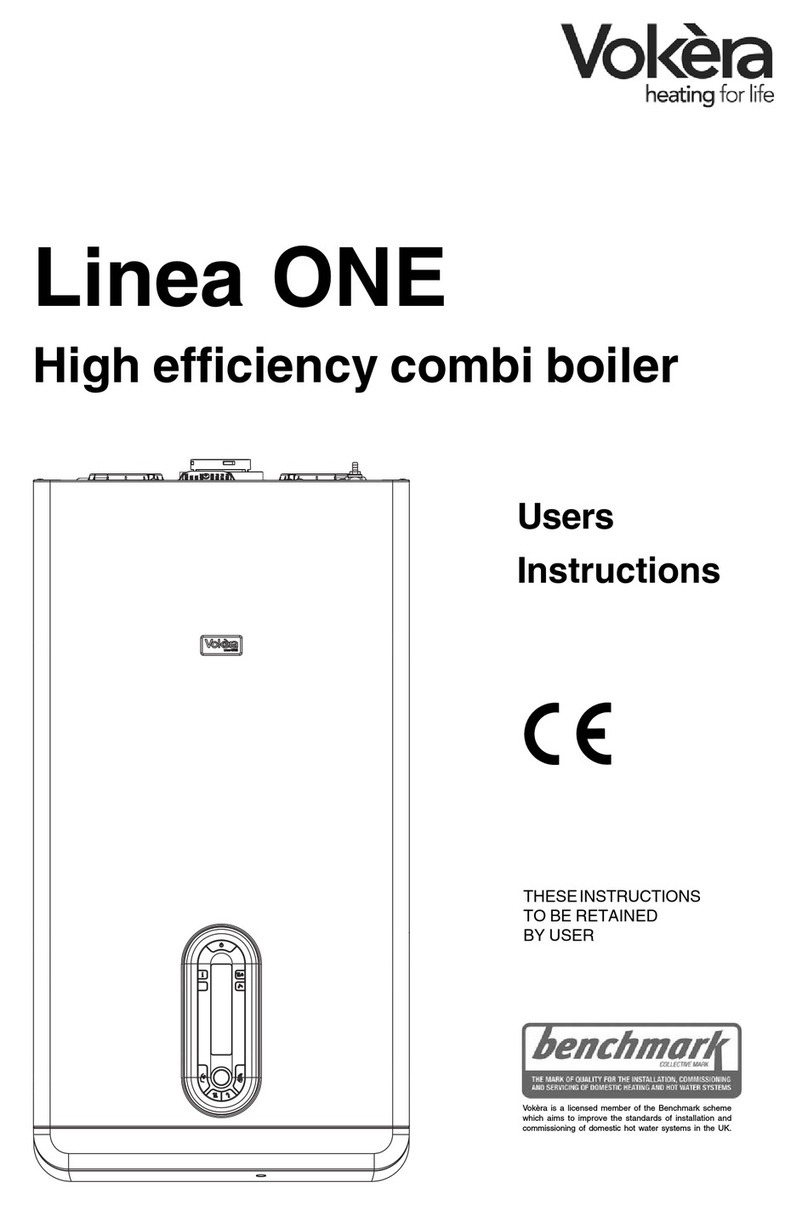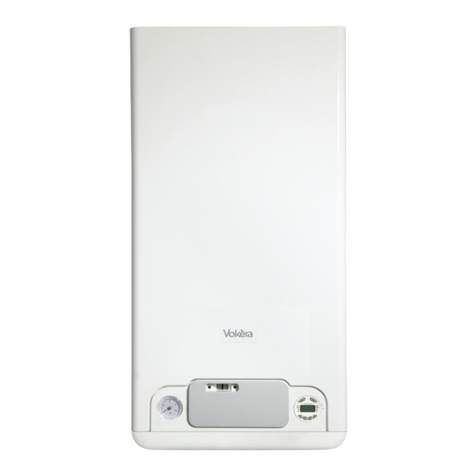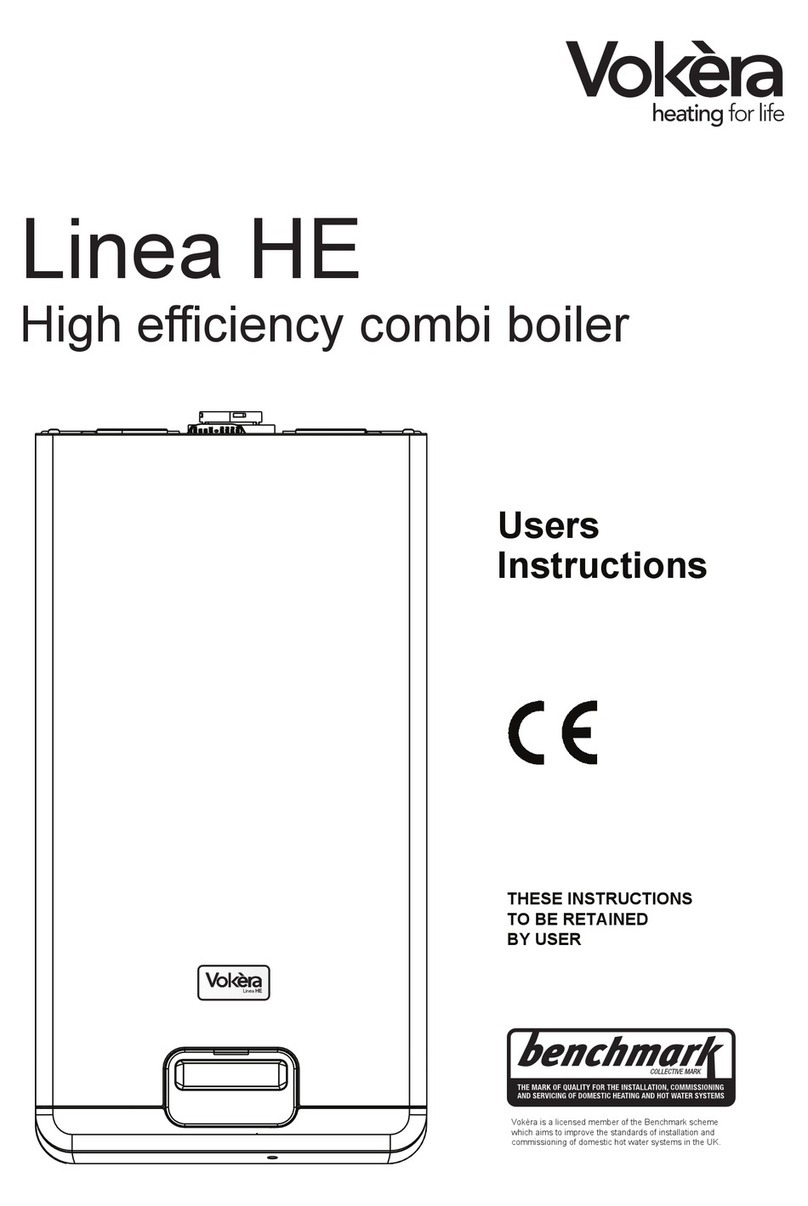
Supplied By www.heating spares.co Tel. 0161 620 6677
2
SECTION 1 DESIGN PRINCIPLES AND OPERATING SEQUENCE
1.1 PRINCIPLE COMPONENTS
●A fully integrated electronic control board
featuring electronic temperature control,
continuous air/gas modulation, anti-cycle
control, pump over-run, self-diagnostic fault
indicator, electronic ignition with flame
supervision, & appliance frost protection.
●Cast aluminium mono-block heat exchanger.
●Low Nox burner with pre-mix.
●Two-stage gas valve.
●Pump.
●Expansion vessel.
●Pressure gauge.
●Safety valve.
1.2 MODE OF OPERATION (at rest)
When there is no demand for heating or hot
water, the boiler will periodically light to pre-heat
the domestic hot water heat exchanger to
approximately 55°C. This ensures that the
appliance is at operating temperature when there
isarequestfordomestichotwater.Theparameter
fortheallowabletemperaturedrop–betweenpre-
heat operation – can be adjusted. If the appliance
remainsinactiveforaperiodof24hours,thepump
and motorised valve will be energised for a few
moments to prevent these components from
seizing. Should the flow temperature sensor fall
below 7°C the pump will be energised.
If the flow sensor temperature falls to below 3°C
theburnerwillbelitandtheappliancewilloperate
at the minimum output until the temperature of
the flow sensor reaches 10°C, whereupon the
pumpwillcontinuetoruninpumpover-runmode.
1.3 DOMESTIC HOT WATER MODE
When the appliance is at rest, the motorised
valveisenergisedtothehotwaterposition,when
a demand for hot water is made the cold water
temperature sensor activates the pump and fan.
Whenthefanissensedtobeoperatingcorrectly,
theignitionsequencecommences.Thespeedof
the fan and therefore the output of the boiler is
determined by the temperature of the water
sensed by the return temperature sensor,
consequently a high temperature at the return
sensor results in a lower fan speed.
As the water temperature increases, the
temperature sensors – located on the flow and
return pipes of the boiler – reduce the fan speed
via the electronic circuitry. Depending on the
load,eitherthewatertemperaturewillcontinueto
rise until the set point is achieved or the water
temperature will fall whereby fan speed will
increase relative to the output required.
1.4 CENTRAL HEATING MODE
Whenthereisarequestforheatviathetimeclock
and/or external controls the motorised valve and
pump will go through a self-test function this is to
ensurecorrectoperationandvalveconfiguration.
Oncetheself-testfunctioniscomplete,thepump
and fan will activated via the flow temperature
sensor. When the fan is sensed to be operating
correctly,theignitionsequencecommences.The
speed of the fan and therefore the output of the
boiler is determined by the temperature of the
water sensed by the flow & return temperature
sensors,consequentlyahigh temperature at the
flow sensor results in a lower fan speed. As the
water temperature increases, the temperature
sensors – located on the flow and return pipes of
theboiler–reducethefanspeedviatheelectronic
circuitry.Depending on theload,either the water
temperaturewillcontinuetoriseuntilthesetpoint
is achieved or the water temperature will fall
whereby fan speed will increase relative to the
outputrequired.Whentheboilerhasreachedthe
set point, the burner will switch off. The built-in
anti-cycle device prevents the burner from re-
lighting for an adjustable period of time (factory
default is 3 minutes). When the temperature of
the flow sensor falls below the set-point, the
burner will re-light.
1.5 SAFETY DEVICES
When the appliance is in use, safe operation is
ensured by:
●a high limit thermostat that interrupts the
operation of the burner;
●adifferentialtemperatureprotectioncircuitwhich
interrupts the burner if the temperature
differential is inverted;
●a fan speed sensor which checks the correct
operation of the fan, thereby allowing safe
operation of the burner;
●asafetyvalve which releases excess pressure
from the primary circuit;
●a condense pressure switch that will stop the
burner from operating should the condense
trap become blocked.
Fig. 2
return flow hw
outlet
cold
inlet
gas
1
NTC1 (flow sensor)
NTC 3
(inlet sensor)
Main Heat
Exchanger
Expansion
vessel
4
NTC2
(return sensor)
Domestic Heat
Exchanger


